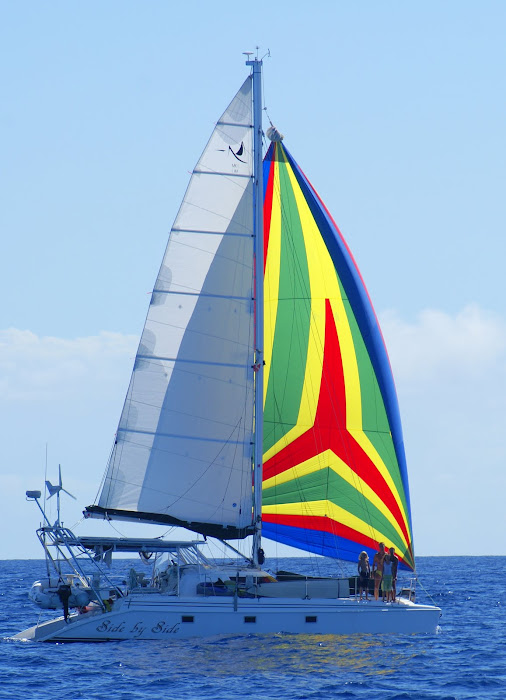
Trinidad is like no other island in the Caribbean with 1.2 million people of African and East Indian decent. Tourism is minimal with an economy based on natural gas and oil reserves. In fact the US is dependent on Trinidad for 70% of its natural gas. Chagaramas, where all the haul out marinas are, is a filthy port that is the “safe place”, below the 10.5 latitude for hurricane insurance. The sail boats are packed like sardines into large yards having 20’ fences laced with razor wire and armed guards to keep ‘dem safe.
Jessie James has become a legend among the cruising community. He organizes trips to the market, the grocery stores, site seeing, and airport shuttle service. I asked what the secret to his success was and he said easy, “if you want to be picked up at 2:00, I’ll be there at 1:40. Other taxis forget, don’t care, or are out liming.” The highlight of Trinidad was the Leather Back turtle excursion that took us from the west end of the island to the untouched northeast corner. Starting at 5:00PM, we meandered across Trinidad stopping to eat at a Chinese restaurant. We were shocked seeing a street person dash in, grab a patron’s abandoned meal, and flee into the darkness as it dripped through his fingers. The drugs must have given him the munchies. After travelling several hours on ever unimproved roads we arrived at the protected NE coast.
A few remarkable facts about the Leather Back turtles we learned included: they are highly endangered and only number a couple thousand; have no shell just a massive thick black skin; live most of their life in the North Atlantic; mate with several turtles they happen to meet in the north each mating season and do so for 4-6 hours a session. Wwhhmmm, I want to be reincarnated as a turtle, whispered Angie. Only the females come down to a select few areas in the Caribbean to then lay multiple “clutches” of some 80-120 eggs each. The adults are massive, about the size of a twin bed and weighing in at 600-1200 pounds. Sadly, the survival rate to adulthood is less than 1%. They will not lay there eggs where there are lights on shore (ie. development) because the babies follow the night light of the stars and moon reflecting off the ocean to guide them on their amazing quest for survival. Otherwise, they follow the artificial lights on land and are found dehydrated and dead about the compound the next morning. Unfortunately, in places like Grenada and St. Vincent, locals still take the eggs! Trinidad and its international band of researchers are working hard to save the majestic leatherback from extinction.
Jessie James has become a legend among the cruising community. He organizes trips to the market, the grocery stores, site seeing, and airport shuttle service. I asked what the secret to his success was and he said easy, “if you want to be picked up at 2:00, I’ll be there at 1:40. Other taxis forget, don’t care, or are out liming.” The highlight of Trinidad was the Leather Back turtle excursion that took us from the west end of the island to the untouched northeast corner. Starting at 5:00PM, we meandered across Trinidad stopping to eat at a Chinese restaurant. We were shocked seeing a street person dash in, grab a patron’s abandoned meal, and flee into the darkness as it dripped through his fingers. The drugs must have given him the munchies. After travelling several hours on ever unimproved roads we arrived at the protected NE coast.
A few remarkable facts about the Leather Back turtles we learned included: they are highly endangered and only number a couple thousand; have no shell just a massive thick black skin; live most of their life in the North Atlantic; mate with several turtles they happen to meet in the north each mating season and do so for 4-6 hours a session. Wwhhmmm, I want to be reincarnated as a turtle, whispered Angie. Only the females come down to a select few areas in the Caribbean to then lay multiple “clutches” of some 80-120 eggs each. The adults are massive, about the size of a twin bed and weighing in at 600-1200 pounds. Sadly, the survival rate to adulthood is less than 1%. They will not lay there eggs where there are lights on shore (ie. development) because the babies follow the night light of the stars and moon reflecting off the ocean to guide them on their amazing quest for survival. Otherwise, they follow the artificial lights on land and are found dehydrated and dead about the compound the next morning. Unfortunately, in places like Grenada and St. Vincent, locals still take the eggs! Trinidad and its international band of researchers are working hard to save the majestic leatherback from extinction.
